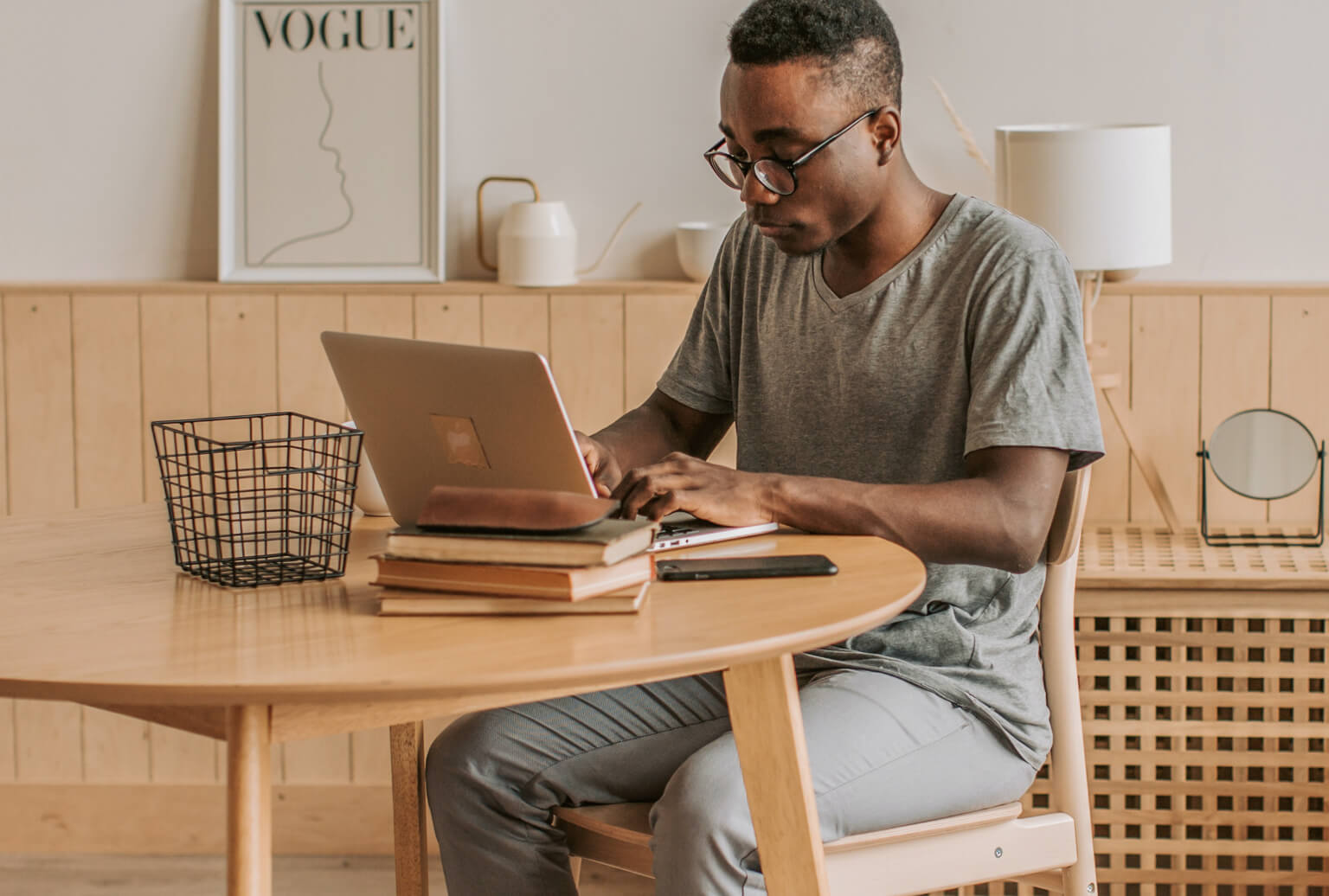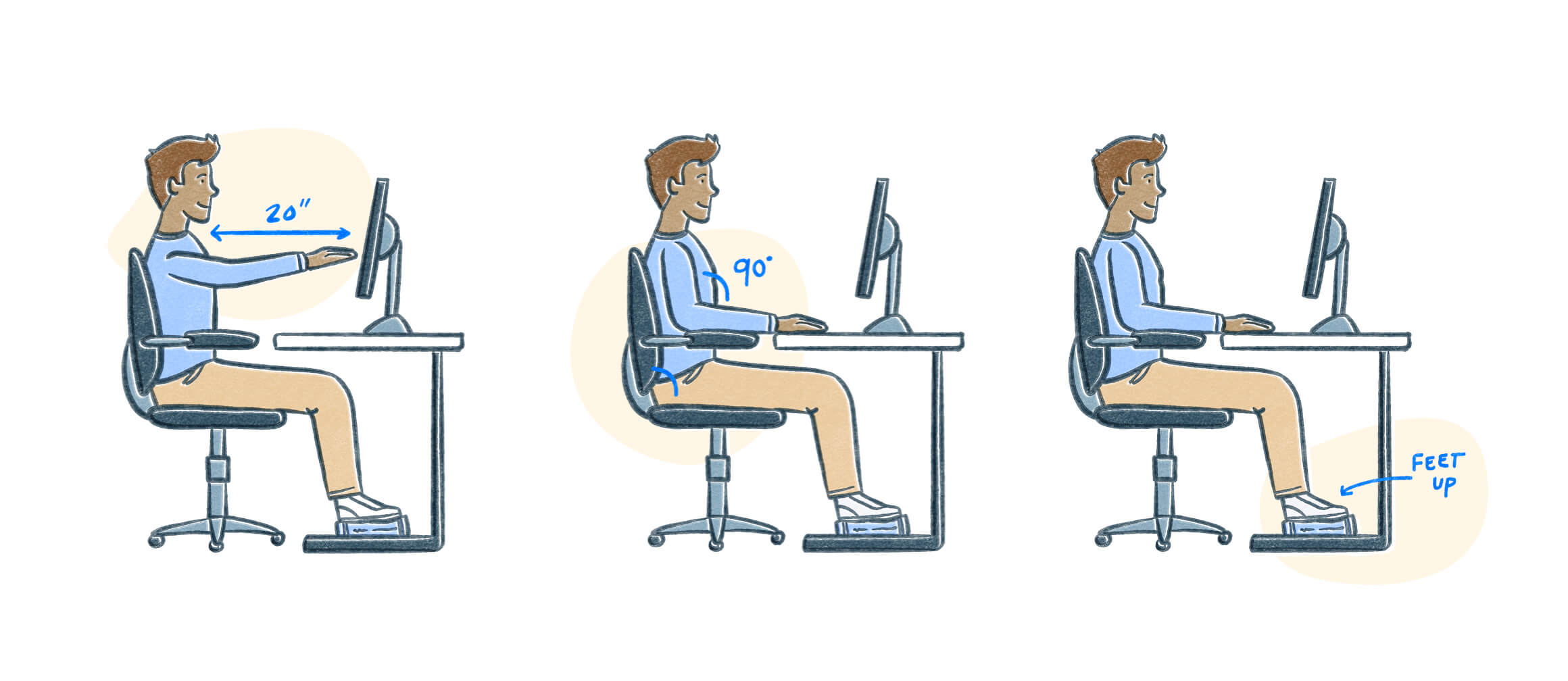Having a designated workspace at home can be the difference between a long and stressful work session and a shorter, more advantageous and productive work session. How many times have you looked up at the clock only to realize that the project you thought would take an hour is suddenly moving into multiple hours?
Staying away from the couch and avoiding the trap of staying in bed to get some work done requires motivation and focus. Having an exciting and comforting work or study space to turn to can be the tipping point for making better decisions.
Unfortunately, the reality is that many of us simply haven’t realized the potential to pimp out our desk stations in order to get us to this level. In some cases, we could even be unknowingly hurting our productivity by having some bad habits in place.
The good news is that creating a productive desk space doesn’t have to be a chore. In this article, we’re going to focus on tips and tricks that are centered around comfort and customization on your study and workspace without breaking the bank. There’s no need to go spend hundreds of dollars on fancy or cute knick-knacks to fill your desk with. Instead, work with what you already have, and maximize the efficiency and purpose of every item.

How Having A Customized, Work-Designated Space Improves Productivity
Everyone can envision the general accouterment for a workstation: a desk, computer, mouse, lamp, and paper and pens. However easy it may be to acquire and assemble these basics, the reality is that there are a lot of other components to take into consideration when creating a perfect work-at-home study station.
Take for instance lighting. Did you know the type of lighting you have at your desk can deeply affect your mood as well as your motivation levels? Did you know that having a peppermint scent nearby can increase your concentration and energy levels? Have you thought about how far away your monitor should be from your eyes? (P.S. It’s about 20 inches, or an arm’s length away.)
While it may be easy to MacGyver a makeshift desk from the remnants of leftover supplies – from that extra dining chair to mom’s old desk lamp – the reality is that placing a little extra care and attention to even the smallest or simplest elements of a workspace can improve your productivity and even put you in a better mood.
Thinking about the long term physical and mental toll that various elements can have on you throughout the day is essential for crafting an effective workspace. Getting into the rhythm of conducting work in a designated location is also key to staying focused.
Once you’ve put the time and effort into crafting a hyper customized space, you can maximize your productivity by having distractive elements removed and purposeful elements maximized.

Focus on the Ergonomics of Your Space
Ergonomics. Ergonomics. Ergonomics.
Just like location, it is the foundation for long term success. As we age, dealing with mild neck pain or a sore back from slouching all day stresses our body. In fact, the difference between slouching and good posture can be comparable to dealing with an hour-long commute versus a 10-minute one. Making good ergonomic decisions can make or break you.
There’s a lot of science and studies behind the perfect ergonomic desk set up, but realistically there are just a few areas that need the most attention:
Place your computer monitor at an appropriate distance away
Smaller monitors should be placed approximately 20 inches (or an arm’s length) away from your eyes. If you have a larger monitor, push it a bit further back, up to 40 inches away. Dual monitors should be placed closely together and at the exact same height and distance. This reduces the strain on your eyes from staring at screens all day.
Make sure your elbows are bent at a precise 90-degree angle to your desk
Your arms should be perfectly aligned with the height of your desk. This means if you’re reaching up, make your desk shorter or your chair taller. If you’re reaching down, lower your chair height or make your desk a bit taller. This ensures your shoulders are in proper alignment and promotes good posture all around.
Keep your back straight at all times
This means making sure your chair fits nicely underneath your desk so you’re not hunched overreaching for the keyboard. It also means potentially placing a small lumbar support pillow behind your lower back if you find yourself slouching often.
Check your foot placement
Your feet should never be hanging mid-air and should always be fully supported while sitting. If your toes are touching the floor but your heel isn’t, your seat is too high. This is especially important for short people as they are more susceptible to poor seated leg posture. Using a simple footrest – from a fancy rocking one to an old pile of books – can improve your posture as well as circulation to your legs.
Use Scent and Lighting To Your Advantage
Breathe in Focus and Productivity With Certain Scents
Scientists have continually studied the relationship between our five senses and memory retention and learning. Did you know that the sense of smell is closely linked with memory? It’s true. Certain scents have an exceptional ability to instantaneously trigger vivid memories, from the smell of an old book flashing back memories of childhood to the smell of roasted marshmallows or pine cones transporting us to thoughts of wintertime.
This trick can be employed for productivity at your workspace too. For example, the scent of cinnamon can improve your memory and cognitive function while jasmine helps with stress relief while also encouraging a feeling of revitalization.
Doing a bit of research into the field of aromatherapy will produce insights into how you can utilize specific scents to achieve particular goals. Once you’ve found a few scents that work, consider buying a scented candle or an essential oil diffuser that you can keep at your desk and utilize only while you’re working. This way your mind will subconsciously associate the smell of the space with focus and work, helping you stay on task.
Lighting Plays A Huge Role In Your Mood and Wellbeing
Bad lighting in an office setting is associated with a range of negative health effects, both physically and mentally. Artificial lighting has been known to produce eye strain, headaches, fatigue and even stress and anxiety in high-pressure work environments.
Natural sunlight will always be the absolute best form of lighting in any setting. Without it, some people can even suffer from seasonal affective disorder (SAD).
If feasible, set up your workstation as close to a window as possible. Rearranging furniture in order to make it work is absolutely worth the effort for long term benefits.
If natural light just isn’t an option, the next best option is a full spectrum light bulb. These light bulbs are the closest artificial solution to natural sunlight you can get. They are a white light that produces small amounts of ultraviolet and infrared rays to imitate a sunlight spectrum precisely.
Many people tend to associate white light with fluorescent lighting, the common culprit of headaches and fatigue due to too much light or flickering. In reality, cool white lights have been proven to be more effective in academic performance and learning, especially when compared to yellow or warm lighting.
If you already have a lamp at home, take out the bulb and look at it. Do some research and see if you should replace it with something more supportive.
Incorporative Productive Elements Into Your Desk
See The Timer, Be The Timer
Have you ever added in strategic breaks to your work schedule? We’re not talking about your lunch break or the occasional bathroom break. We mean pre-planned slots of time where you allow yourself to browse Facebook, text your friend, or catch up on a Quibi episode, all while relishing in the fact that you’re being productive.
A popular way of adding strategic breaks into a study or work schedule is known as the Pomodoro Technique. This method breaks your work time into 25-minute intervals of focused work with 5-minute breaks in between. After four of these sessions, you take a longer break of 15-20 minutes. Rinse and repeat for an incredibly productive day of work.
The only thing you need to practice the Pomodoro Technique? A timer of some sort. It can be a digital timer or even an hourglass timer. What matters is that it has customizable increments of time.
Whatever physical item you choose, keep this timer at your desk and within view at all times. Not only will it motivate you to use it, but it will serve as a reminder that while you’re sitting at your desk, it’s time to work.
Keep Your Digital Calendar Close, But Your Printed Calendar Closer
Doesn’t 2000 feel like it was just 10 years ago? I seem to have misplaced an entire decade somehow. It’s incredible how quickly time can fly, especially when you’re bogged down with a load of responsibilities and tasks. Time can easily slip by without notice.
That’s why having a calendar at your desk is essential for time management. A project that’s due in a week can creep up quickly if you haven’t looked at your calendar for a couple of days.
Having a large desk calendar is a motivator to keep your desk clean and have an easy-to-access notepad at all times. If having the calendar on your desk isn’t your thing, get one for your wall and place it right above your desk. Even a whiteboard with a calendar component will do.
Get Excited About Your Desk By Making It Your Own
Every desk space should reflect the character of its owner. Add photos of your friends and family, get that cute little desk plant, and buy that coffee mug you’ve been thinking about.
You should absolutely allow yourself to put money towards items that you know will bring a smile to your face when you see or use them. What’s important is to not go overboard. Is that pen holder really worth the $20 when your current one will do? Are you sure you’ll actually use that new notebook when your current one is still half-empty?
Certain things are worth their weight in gold, from a nice surge protector ensuring the safe charging of your electronics overnight to nicer pens and pencils that you really enjoy writing with. Make a judgment call on what will actually spark joy versus what will end up becoming distractions that could lead to poor productivity.
Crafting and executing the ultimate workstation is a way to learn more about yourself and your study and work habits. Make the most of the process, and don’t be afraid to try something new, even if it feels unknown or daunting. The greatest discoveries happen when you least expect them.

 learning science
learning science